Huawei Launches the Mate X: Folding in a New Direction
by Andrei Frumusanu on February 24, 2019 8:45 AM EST- Posted in
- Smartphones
- Huawei
- Mobile
- MWC 2019
- Foldable Smartphones
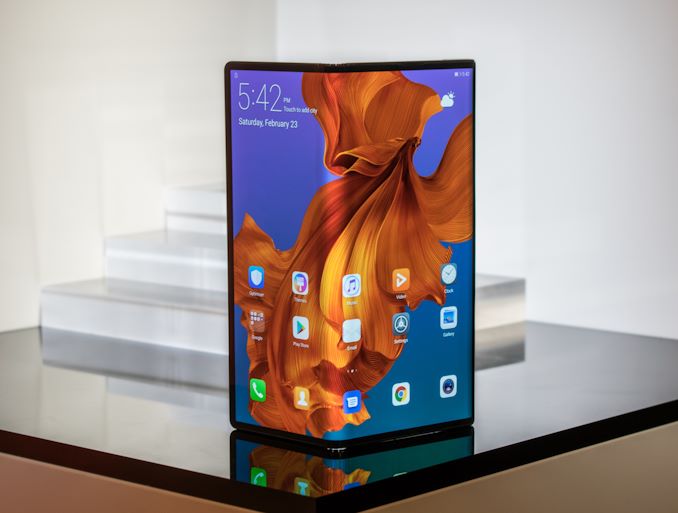
Today at Huawei’s press conference at MWC Barcelona, Huawei has something special to share with us. It’s only been a couple of days since Samsung announced its own foldable phone, the Galaxy Fold – generating a lot of talk and hype around the new form-factor. Huawei of course didn’t stand still and has long been an innovator themselves, introducing a lot of new first-exclusive features over the last year or two. This year, Huawei is ready to steal Samsung’s thunder with the follow-up announcement of the new Mate X – the company’s own take on a foldable smartphone.
From the front, you actually might have issues identifying the Mate X from any other larger screened phone. While the device is folded on itself and you’re facing on the wide screen side, there’s not much to really distinguish it from any other modern bezel-less device.
It’s when you view the device from the top or bottom sides that it becomes evident that this isn’t your usual slab phone design. The Mate X is defined for being a foldable phone with a bendable screen on the outer surface (Whereas the Galaxy Fold’s screen is on the inner surface).
Huawei here has opted for a novel asymmetric design where one half of the screen is narrower than the other one. What this allows the company to do is to create a thicker phone edge where we locate the phone’s quad-camera setup. Because the cameras are all lined up on this “bar”, it means that the phone doesn’t actually distinguish between rear and front cameras. However because when the phone is folded, we have screens on both sides of the phone and you can still take selfie pictures and see yourself in a viewfinder. The bar also serves to provide housing for the USB-C connector as well as the 2-in-1 power button / finger-print sensor.
The fullscreen display on the wide side of the phone when folded acts as a 6.6” unit with a resolution of 2480 x 1148. This results in a relatively modern 19:5:9 aspect ratio which we see in a lot of new flagship devices. Flipping the phone around with the “bar” facing us, we’re presented with a narrower display which stands in at 6.38” and a resolution of 2480 x 892 and a resulting aspect ratio of 25:9.
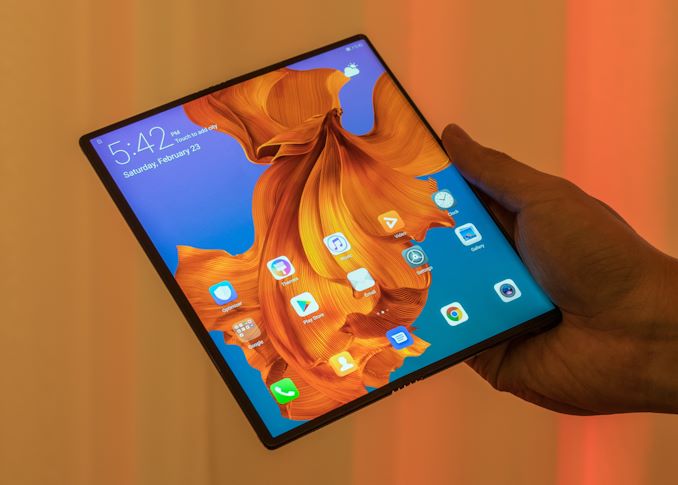
Finally, unfolding the Mate X results in the AMOLED screen to reveal its true physical dimensions. Here we see the full footprint of the 8” flexible panel – coming in at a full native resolution of 2480 x 2200 and its quite square-ish 8:7 aspect ratio.
What is remarkable about the Mate X’s design is just how thin Huawei has managed to make it: The unfolded parts of the phone come in at a mere 5.4mm which is thinner than almost any other phone today, and also much thinner than what Samsung was able to achieve in the Galaxy Fold. The “side-bar” as well as the folded phone thickness comes in at 11mm, which is still a reasonable thickness.
Huawei calls the new hinge system a “Falcon hinge”. It’s to be noted that this seems to be the weak-point of Huawei’s design as it doesn’t look nearly as refined as Samsung’s attempt. At the pre-brief we weren’t able to actually get our hands on the phone, but one unit of the presenter had a notable “waviness” of the screen where the hinge was. It also seemed that the hinge locked into place via some sort of magnetic system, as that’s what it sounded like when unfolding the phone. It’s to be noted that the devices that were presented were still early designs – so Huawei might be able to iterate here and provide something more robust in commercial units.
Even though one segment of the Mate X is only 5.4mm thick, the company has still managed to cram in a lot of battery into the phone. Here we see a battery cell in each segment, resulting in a total 4500mAh battery capacity. Because there’s two batteries, they can be charged at the same time at high charging rates. Here Huawei first proclaims it’s able to charge the phone at 55W of power, reaching 85% of capacity from empty in just 30 minutes.
The number one concern of the Mate X however is the fact that it is a outwards folding phone. By nature of it being a flexible display means that we’re dealing with a polymer material which is softer than glass, and thus also more scratch prone. Samsung’s inwards folding design here will be much less prone to scratches, however the Mate X will be a quite more fragile phone in this regard. In fact it seems Huawei is aware of this as they also presented a protection case in which you can slip the whole device in, trying to address this compromise of this surely better looking, but likely less practical design.
| Mate X | |
| SoC | HiSilicon Kirin 980 |
| Display | Flexible AMOLED Unfolded: 8" 2480 x 2200 8:7 Folded Short Side: 6.38" 2480 x 892 25:9 Folded Wide Side: 6.6" 2480 x 1148 19:5:9 |
| Dimensions | Unfolded display: 5.4mm - Camera/Folded: 11mm |
| RAM | 8GB |
| NAND | 512GB +nanoMemory slot |
| Battery | 4500mAh |
| Primary Rear Camera | yes |
| Secondary Rear Camera | yes |
| Tertiary Rear Camera | yes |
| SIM Size | Dual SIM nanoSIM (or NM card) |
| Cellular Capability | 5G NR NSA/SA 4x4 MIMO 256QAM (4.6Gbps sub-6Ghz) mmWave capable |
| Connectivity | USB Type-C |
| Features | (It Folds) |
| Launch OS | Android 9.0 |
| Launch Price | 2299€ |
In terms of specifications, the Mate X is very much a high end phone. Powered by the Kirin 980, the device holds up with the best in the market in terms of processing power.
What actually further distinguishes the Mate X is that this isn’t just Huawei’s first foldable phone, it’s also Huawei’s first 5G phone. With connectivity provided by HiSilicon’s Balong 5G01 modem, Huawei is able to provide 5G NR NSA/SA connectivity and speeds of up to 4.6GHz at 200MHz of bandwidth at 4x4 MIMO and 256QAM in the sub-6GHz range. We’re not sure if the phone supports mmWave connectivity.
Huawei plans to make the Mate X available in the middle of 2019 at a super-premium price of 2299€. Availability of the phone will strongly depends on the 5G deployments of carriers.
This article is breaking news – we’ll be updating the article as Huawei CEO Richard Yu further details the hardware of the phone.


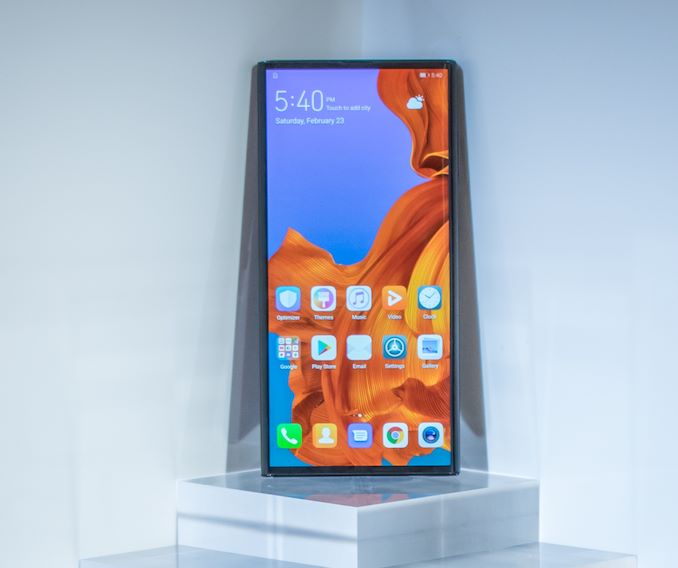
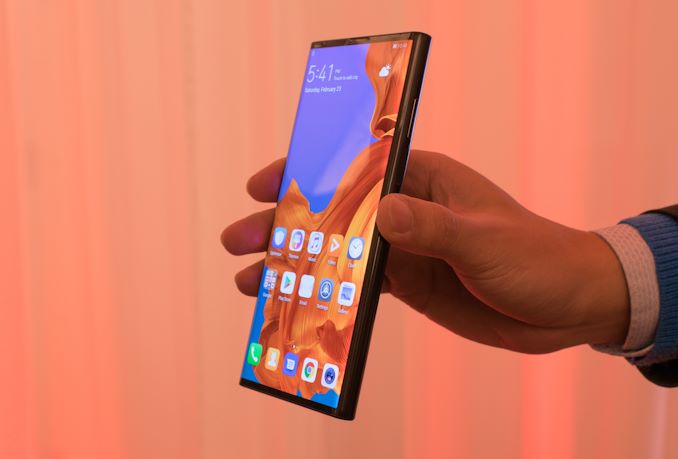
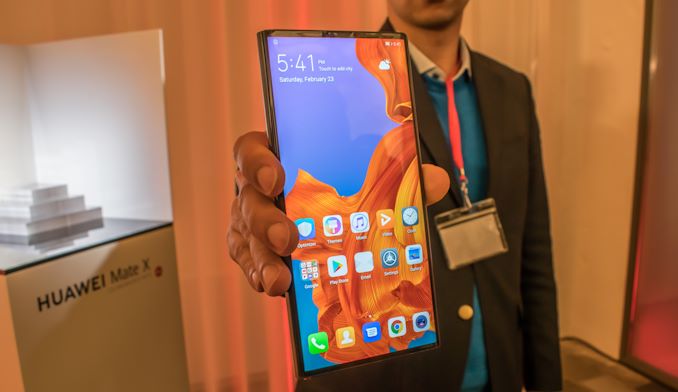
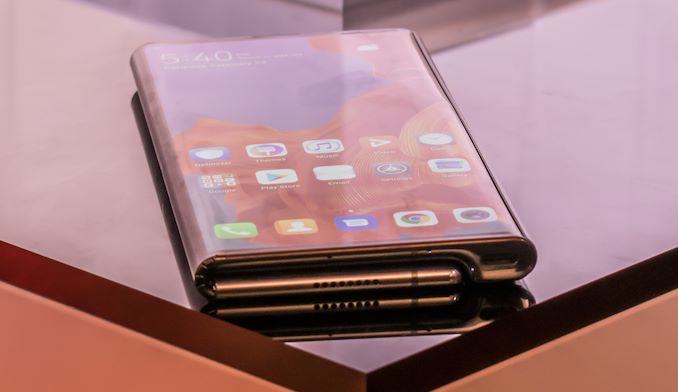
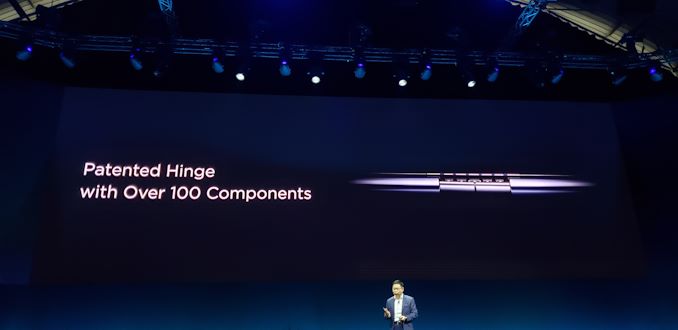
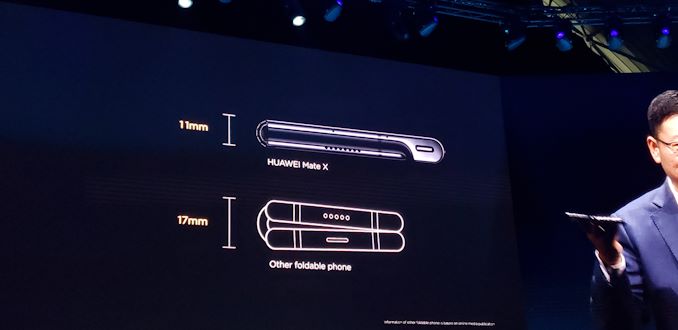
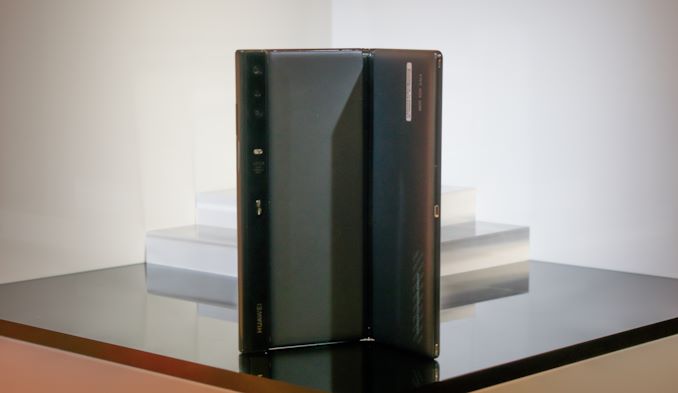



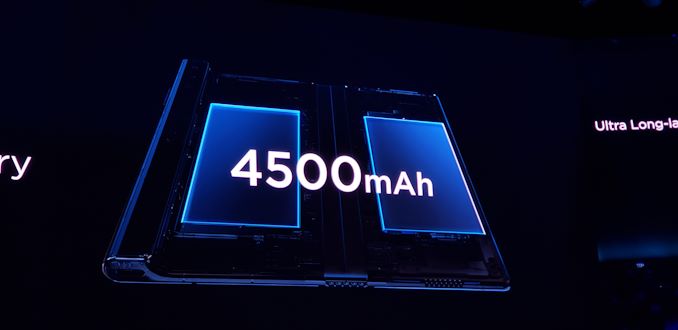
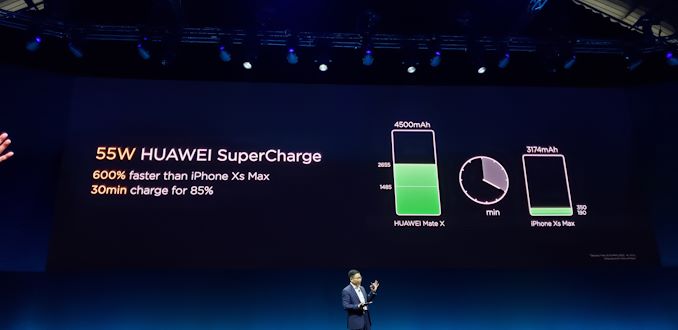
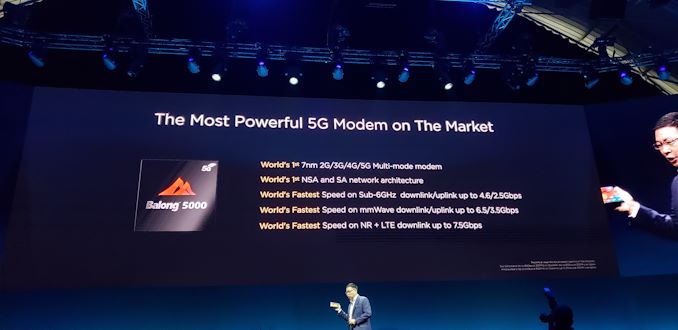

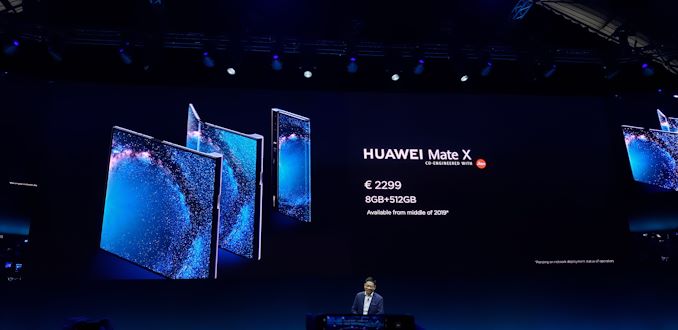








51 Comments
View All Comments
porcupineLTD - Sunday, February 24, 2019 - link
Watch all charges and accusations being dropped once trade negotiations are over, this Huawei witch hunt is nothing but a charade.Morawka - Sunday, February 24, 2019 - link
Huawei has a long history of IP theft. Tappy the robot being the most recent. In 2004, Huawei stole core router software code from Cisco Systems. In 2011 Huawei stole a hinge mechanism made by Apple that allowed for thinner screens and bezels. Just look at any of their handsets produced from 2014-2016 and compare those with Apple and Samsung devices. It's not a witch hunt. There is merit to the accusations.Sailor23M - Monday, February 25, 2019 - link
The whole country has a history. ever wonder why there is no google, facebook, twitter, uber etc. there cos its better to steal / copy and prop up your own commi companies.s.yu - Monday, February 25, 2019 - link
This unit also uses a curved display from BOE which utilized technology stolen from Samsung Display. Granted BOE didn't dirty their own hands stealing the technology, but I doubt that the company who did (a former Samsung supplier) would have done it without a firm commitment from a buyer.Tams80 - Monday, February 25, 2019 - link
I wouldn't be surprised if they nabbed something from Samsung in creating this. They certainly nabbed the 'inspiration' to create such a device at this particular time, but of course, that's a crime, just cheesy.jiangqiushi - Monday, February 25, 2019 - link
NuCurrent, a company devoted to wireless charging technology, is suing Samsung for the alleged theft of NuCurrent’s intellectual property.This is not the first time Samsung has been sued for IP theft, nor is it the first time it’s allegedly stolen from much smaller companies.
Samsung knows that its legal team will beat any other smaller company’s legal team in a court battle, so it doesn’t have much fear when it comes to IP theft.
jiangqiushi - Monday, February 25, 2019 - link
Apple Inc. v. Samsung Electronics Co., Ltd. was the first of a series of ongoing lawsuits between Apple Inc. and Samsung Electronics regarding the design of smartphones and tablet computers; between them, the companies made more than half of smartphones sold worldwide as of July 2012.[1] In the spring of 2011, Apple began litigating against Samsung in patent infringement suits, while Apple and Motorola Mobility were already engaged in a patent war on several fronts.[2] Apple's multinational litigation over technology patents became known as part of the mobile device "smartphone patent wars": extensive litigation in fierce competition in the global market for consumer mobile communications.[3] By August 2011, Apple and Samsung were litigating 19 ongoing cases in nine countries; by October, the legal disputes expanded to ten countries.[4][5] By July 2012, the two companies were still embroiled in more than 50 lawsuits around the globe, with billions of dollars in damages claimed between them.[6] While Apple won a ruling in its favor in the U.S., Samsung won rulings in South Korea, Japan, and the UK. On June 4, 2013, Samsung won a limited ban from the U.S. International Trade Commission on sales of certain Apple products after the commission found Apple had violated a Samsung patent,[7] but this was vetoed by U.S. Trade Representative Michael Froman.[8]porcupineLTD - Monday, February 25, 2019 - link
Samsung also stole 28 and 16(14) nm from TSMC. The guys who were in charge of the 2 nodes at TSMC (different guys) left TSMC to work for Samsung and were later found guilty of corporate espionage and forced to leave Samsung. One of them is now the CEO of SMIC, the most advanced Chinese foundry that will start volume production of 14nm in a quarter or two.porcupineLTD - Monday, February 25, 2019 - link
All companies steal from one another, look at the patent wars: Apple, Samsung, HTC, Nokia, Microsoft and others all sued each other until they decided it was not profitable, this time a statemoved against a company on trumped up charges (the pointy robot and baseless accusations of possible FUTURE spying) and its forcing its allies to do the same (also notice how as trade talks progress all those that called foul on Huawei are backpedaling including Germany, UK, New Zealand)
tmanini - Tuesday, February 26, 2019 - link
FYI, that 'state' you refer to as trumping up charges: wasn't the first, and isn't forcing the rest. Australia starts the block back in 2012.There is MUCH more to this than you lay out. There are some in-depth articles from business people who talk about the 'partnering' required to have a company in China... and the end results of those 'friendships'. That is part of what fuels the practical mistrust of a company so closely aligned with a State Government that doesn't allow privacy, and has Board members who were very highly ranked in the State Government.